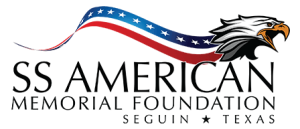
The Lazy U Ranch – The “U” stands for the Texas cattle brand registered by Henry Joseph Ulbrich in 1914. Henry’s son James Jennings and Edie Ulbrich purchased the property in 1970. Naumann Rd is named after the German family who had a 360-acre land grant which included this property in the 1880s. Several dwellings including those at the front gate are still occupied by some of the Naumann descendants.
The Ulbrich family are sixth generation Texans. August Karl Ulbrich arrived from Germany in 1854 at the Gulf Coast port town of Indianola (later destroyed by a hurricane in 1886), traveled by foot a distance of 130 miles and settled the town of Martindale, sixteen miles northeast of the Lazy U Ranch. His original travel papers from Germany are displayed in the lodge entry.
August Ulbrich (grandfather of Jim Ulbrich) is buried in a family cemetery. His tombstone identifies his regiment in the Confederacy during the Civil War. August Karl Ulbrich was born in the year of 1826. He was 6 months old when Thomas Jefferson died, and 10 years old when the Alamo fell in 1836.
Today James (Jim) Ulbrich and the majority of descendants were born and reside in and around the towns of Poteet and New Braunfels. Edith (Voelger) Ulbrich’s ancestors arrived in the upper East Coast of the U.S. from Germany in 1914. She graduated from the University of Cincinnati in 1949 and brought a touch of “culture” to the Ulbrich family. She passed away in 2003; a beautiful Texas pink granite headstone indicates her remains on the hill under our only mature post oak tree. The Ulbrich family still keeps in touch with her German relatives. Jim Ulbrich, a World War II veteran, is still alive and very active at the age of 88; he lives on the ranch with family enjoying quite a retirement.
Today the ranch is owned and operated by Jim’s daughter, Nancy, and son-in-law, Craig with their daughter Savanna Rio Russell. Craig, himself a fifth-generation Texan with family coming to Texas in the 1850s, has managed and operated the ranch as a wildlife management area since 1998. With extensive native grass management in place, the small 101 acres hosts one of the most robust native ecosystems in south Texas.
